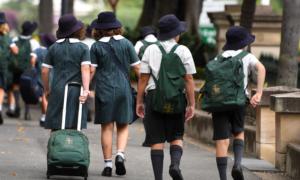Government Vows ‘Realistic’ Reforms Following Disappointing NAPLAN Scores
The education minister highlighted the dedicated $16 billion allocated to the public school system.
After the NAPLAN results exposed deficiencies in education levels, the minister in charge stated that the government planned to implement “practical” reforms to enhance outcomes using the promised $16 billion for public schools.
“I want to present it here. Our plan includes practical measures such as phonics and numeracy assessments in year one to early identify struggling students,” Minister Jason Clare informed Parliament.
He stressed that the budget is not an unrestricted fund and is connected to “practical reforms.”
The NAPLAN data released on the morning of Aug. 14 showed that one in three Australian school students were below literacy and numeracy standards.
This prompted a lengthy Question Time session where the opposition pressed the education minister for clarifications.
Clare remarked that the issue cannot be resolved solely at the school level.
“It starts even earlier. It’s not just about primary school children falling behind, but also kids starting off behind in kindergarten or prep,” he explained.
Connecting this to the recent salary increase for early childhood educators, Clare mentioned that a competent workforce is essential for establishing a truly inclusive early education and care system.
“That’s the motivation behind the 15 percent raise we announced for early childhood educators, which the Liberal Party opposed,” he stated.
The report also pointed out a significant contrast between urban and rural students.
In terms of literacy, only 24 percent of students from very remote schools were considered “strong” or “exceeding,” compared to 70.7 percent of students from major cities. Numeracy data showed similar disparities.
Students with parents holding bachelor’s degrees or higher tended to outperform classmates with parents at Year 11 education levels or below.
Clare informed the House of Representatives that while the Australian education system is solid, there is room for improvement to make it “much better and fairer.”
He further highlighted that only 20 percent of children who fall behind manage to catch up by Year Nine in the middle of high school.
“Consequently, in the past seven years, we’ve witnessed a decline in high school graduation rates from 85 percent to 79 percent. That’s what needs addressing,” he stressed.
Additionally, the minister acknowledged that Indigenous students were lagging behind in all five NAPLAN testing areas: numeracy, reading, writing, spelling, grammar, and punctuation.
One-third of Indigenous students were identified by NAPLAN as requiring “extra support”—three times more than the national average.






